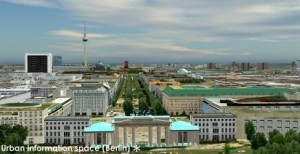Yesterday I came across an articel in Graphical Models (71), pp. 1-21. It is about PlantGL, an open-source graphic toolkit for the creation, simulation and analysis of 3D virtual plants. The software is based on three components: a geometric, an algorithmic and a GUI library with an interface to Phyton, which enables a modeller to develop scripts and procedures in Python. Furthermore, importers and exporters for data exchange with several modelling and visualization systems, such as AMAPmod/VPlants and Pov-Ray, exist. The approach combines several methods to represent plant structures at different scales, ranging from tissues to plant communities. One of the features are parametric envelopes for the representation of crown shapes, which sounds to be a very promising technique to control the shape of 3D plant models. Accurate representation of the crown shape will be important for representing plants in real world models (e.g. 3D city models) for visibility analysis.
According to the paper the librarys seem to be very powerful and several examples are presented reaching from 2D and 3D tissue models to branching systems and plant communities. Moreover, a quick overview over current plant modelling approaches is given including L-Studio/Vlab and GroGra based on L-systems, the AMAP system, and Xfrog and extensive references to related work are given. Thus I like to encourage everybody interested in plant and vegetation modelling to read the paper and look at the website of the Virtual Plant project team. The site shows several examples, links to research papers and software, and explains the methods apllied in the research.

